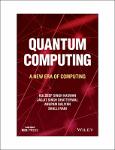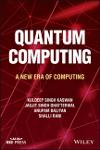Item Infomation
Full metadata record
| DC Field | Value | Language |
|---|---|---|
| dc.contributor | Dhatterwal, Jagjit Singh | - |
| dc.contributor | Baliyan, Anupam | - |
| dc.contributor | Rani, Shalli | - |
| dc.contributor.author | Kaswan, Kuldeep Singh | - |
| dc.date.accessioned | 2024-10-29T01:45:20Z | - |
| dc.date.available | 2024-10-29T01:45:20Z | - |
| dc.date.issued | 2023 | - |
| dc.identifier.uri | http://thuvienso.thanglong.edu.vn//handle/TLU/11579 | - |
| dc.description.abstract | Quantum mechanics emerged as a branch of physics in the early 1900s to explain nature on the scale of atoms and led to advances such as transistors, lasers, and magnetic resonance imaging. The idea to merge quantum mechanics and information theory arose in the 1970s but garnered little attention until 1982, when physicist Richard Feynman gave a talk in which he reasoned that computing based on classical logic could not tractably process calculations describing quantum phenomena. Quantum computing is the study of how to use phenomena in quantum physics to create new ways of computing. Quantum computing is made up of qubits. Unlike a normal computer bit, which can be 0 or 1, a qubit can be either of those, or a superposition of both 0 and 1"-- | vi |
| dc.format.extent | 312 pages | vi |
| dc.language.iso | en | vi |
| dc.publisher | John Wiley & Sons, Inc | vi |
| dc.subject | Quantum computing | vi |
| dc.subject | Tính toán lượng tử | vi |
| dc.title | Quantum computing : a new era of computing | vi |
| dc.type | Sách/Book | vi |
| Appears in Collections | Tin học | |
Files in This Item:




